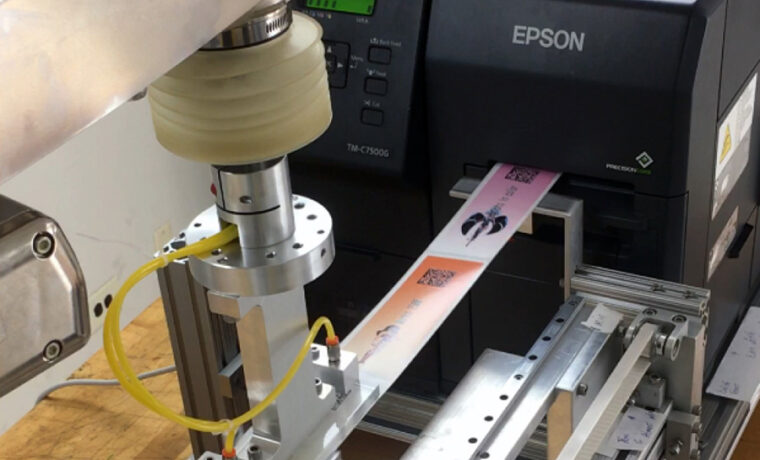- Understanding the Importance of Precision Labeling in Foodservice Organizations
Effective and accurate labeling plays a crucial role in maintaining food safety standards in foodservice organizations. Daydots labels are specifically designed to assist in this process, ensuring that perishable items are properly handled, stored, and used within their designated shelf life.
The Role of Daydots Labels in Food Safety
Daydots labels are essential tools in preventing foodborne illnesses and ensuring the safety of customers. These labels provide valuable information regarding the contents of the food, including the date of preparation, expiration date, and any special handling instructions.
By clearly labeling food items, employees are able to identify and remove products that are beyond their expiration date or may have been improperly stored. This helps prevent the consumption of potentially hazardous food and reduces the risk of foodborne illnesses in the foodservice industry.
Regulatory Requirements for Labeling in the Foodservice Industry
The foodservice industry is subject to various regulatory requirements regarding labeling. These requirements are put in place to protect consumers and ensure food safety standards are met.
Daydots labels help foodservice organizations comply with these regulations by providing a clear and standardized method of labeling perishable items. This includes information such as the product name, date of preparation, expiration date, and any allergen warnings.
By adhering to these regulations, foodservice organizations demonstrate their commitment to safety and quality, enhancing their reputation and customer trust.
- Choosing the Right Daydots Labels for Your Foodservice Organization
With a wide range of Daydots labels available, it’s important to choose the right type for your specific needs. Consider the following factors when selecting Daydots labels:
Different Types of Daydots Labels and Their Uses
Daydots labels come in various types, each designed for specific uses in foodservice organizations. Some common types of Daydots labels include:
- Expiration labels: These labels indicate the date by which a product should be used or discarded.
- Food rotation labels: Used for the first-in, first-out (FIFO) method, these labels help organize inventory and ensure older items are used before newer ones.
- Allergen labels: These labels help identify and warn about potential allergens present in the food, ensuring customer safety.
By understanding the different types of Daydots labels available, you can choose labels that best suit your foodservice organization’s needs and facilitate efficient and accurate labeling.
Finding the Ideal Size and Format for Daydots Labels
When selecting Daydots labels, it’s crucial to consider the size and format that will work best for your organization. Labels that are too small may be difficult to read, while labels that are too large can waste valuable space on containers.
Consider the size of your food containers and the amount of information you need to include on the label. It’s also important to choose labels that are compatible with the surfaces they will be applied to, ensuring they adhere securely and remain legible throughout the product’s lifecycle.
Exploring Customization Options for Daydots Labels
Daydots labels can be customized to suit the specific needs of your foodservice organization. This includes adding your logo or branding elements to the labels, as well as including additional information or instructions that are specific to your business.
Customization options allow you to create labels that not only meet regulatory requirements but also align with your organization’s overall branding and messaging. This can help create a cohesive and professional look for your foodservice establishment.
- Implementing Precision Labeling Practices in Your Foodservice Organization
Implementing precision labeling practices is crucial in maintaining food safety standards and ensuring consistency in your foodservice organization. Consider the following steps to establish effective precision labeling practices:
Developing Standard Operating Procedures for Labeling
To ensure consistency and accuracy in labeling, it’s important to develop standard operating procedures (SOPs) for labeling practices. SOPs provide clear guidelines for employees to follow, outlining the necessary steps for labeling, including the information to include and the proper placement of labels.
By implementing standardized labeling procedures, you can minimize errors and ensure that all products are labeled accurately and consistently in your foodservice organization.
Training Staff on Proper Labeling Techniques
Proper training is essential for ensuring that all staff members understand the importance of precision labeling and are equipped with the necessary skills to label food items correctly.
Training should cover topics such as the importance of labeling, regulatory requirements, proper placement of labels, and the correct interpretation of expiration dates. Regular refresher training sessions can help reinforce these skills and ensure that staff members consistently adhere to labeling standards.
Ensuring Consistency and Accuracy in Labeling Practices
Consistency and accuracy are key factors in effective precision labeling. It’s important to regularly monitor and review labeling practices to ensure that they align with established standards and regulatory requirements.
Regular audits can help identify any areas for improvement and ensure that all food items are properly labeled. Additionally, conducting internal inspections and spot checks can help maintain consistency and accuracy in labeling practices throughout your foodservice organization.
- Maximizing Efficiency and Minimizing Waste with Daydots Labels
Besides maintaining food safety, Daydots labels can also help your foodservice organization maximize efficiency and minimize waste. Here are some strategies for achieving these goals:
Using Daydots Labels for First-In, First-Out (FIFO) Inventory Management
First-in, first-out (FIFO) inventory management is a method that ensures older products are used or sold before newer ones. Daydots labels are crucial for implementing this system effectively.
By using food rotation labels to clearly mark the date of receipt or preparation, you can easily identify which items should be used first. This minimizes waste by preventing the expiration of older products and ensuring maximum freshness and quality of your inventory.
Reducing Food Waste with Proper Labeling of Expiration Dates
Accurate labeling of expiration dates is essential for reducing food waste in your foodservice organization. Daydots labels provide a clear indication of when a product should be used or discarded, ensuring that items are not kept beyond their safe consumption period.
By closely monitoring expiration dates and properly disposing of expired items, you can minimize food waste and maintain the quality and safety of your offerings.
Streamlining Inventory Management with Daydots Labels
Efficient inventory management is essential for the smooth operation of foodservice organizations. Daydots labels can streamline this process by enabling better organization and tracking of inventory.
By clearly labeling food items with their relevant information, such as product name and expiration date, you can easily monitor your inventory levels and identify any potential issues, such as overstocking or slow-moving items. This helps optimize inventory management, reduce costs, and ensure product freshness.
By understanding the importance of precision labeling, choosing the right Daydots labels, implementing effective labeling practices, and maximizing efficiency with these labels, your foodservice organization can streamline operations, enhance food safety, and minimize waste. Invest in quality Daydots labels and develop robust labeling procedures to ensure accurate and reliable food labeling throughout your business.
FAQ
FAQ 1: What is the role of Daydots Labels in food safety? – Daydots labels are essential tools in preventing foodborne illnesses and ensuring the safety of customers. These labels provide valuable information regarding the contents of the food, including the date of preparation, expiration date, and any special handling instructions.
FAQ 2: What are the regulatory requirements for labeling in the foodservice industry? – The foodservice industry is subject to various regulatory requirements regarding labeling. Daydots labels help foodservice organizations comply with these regulations by providing a clear and standardized method of labeling perishable items. This includes information such as the product name, date of preparation, expiration date, and any allergen warnings.
FAQ 3: What types of Daydots Labels are available and what are their uses? – Daydots labels come in various types, each designed for specific uses in foodservice organizations. Some common types of Daydots labels include expiration labels, food rotation labels, and allergen labels. These labels help indicate expiration dates, organize inventory, and warn about potential allergens present in the food.
FAQ 4: How do I choose the right size and format for Daydots Labels? – When selecting Daydots labels, it’s crucial to consider the size and format that will work best for your organization. Labels that are too small may be difficult to read, while labels that are too large can waste valuable space on containers. Consider the size of your food containers and the amount of information you need to include on the label. Choose labels that are compatible with the surfaces they will be applied to.
FAQ 5: Can Daydots Labels be customized? – Yes, Daydots labels can be customized to suit the specific needs of your foodservice organization. This includes adding your logo or branding elements to the labels, as well as including additional information or instructions that are specific to your business. Customization options allow you to create labels that meet regulatory requirements and align with your organization’s overall branding and messaging.
FAQ 6: How can I implement precision labeling practices in my foodservice organization? – To implement precision labeling practices, it’s important to develop standard operating procedures (SOPs) for labeling, train staff on proper labeling techniques, and ensure consistency and accuracy in labeling practices. SOPs provide clear guidelines for employees to follow, proper training ensures staff members understand the importance of precision labeling, and regular audits help maintain consistency and accuracy.
FAQ 7: How can Daydots Labels help maximize efficiency and minimize waste? – Daydots labels can help maximize efficiency and minimize waste through first-in, first-out (FIFO) inventory management, reducing food waste with proper expiration date labeling, and streamlining inventory management. By using food rotation labels and accurately labeling expiration dates, you can ensure items are used or discarded in a timely manner, reducing waste.
FAQ 8: How can Daydots Labels streamline inventory management? – Daydots labels can streamline inventory management by enabling better organization and tracking of inventory. By clearly labeling food items with relevant information like product name and expiration date, you can easily monitor inventory levels and identify any potential issues, such as overstocking or slow-moving items. This helps optimize inventory management, reduce costs, and ensure product freshness.
Useful Resources:
















